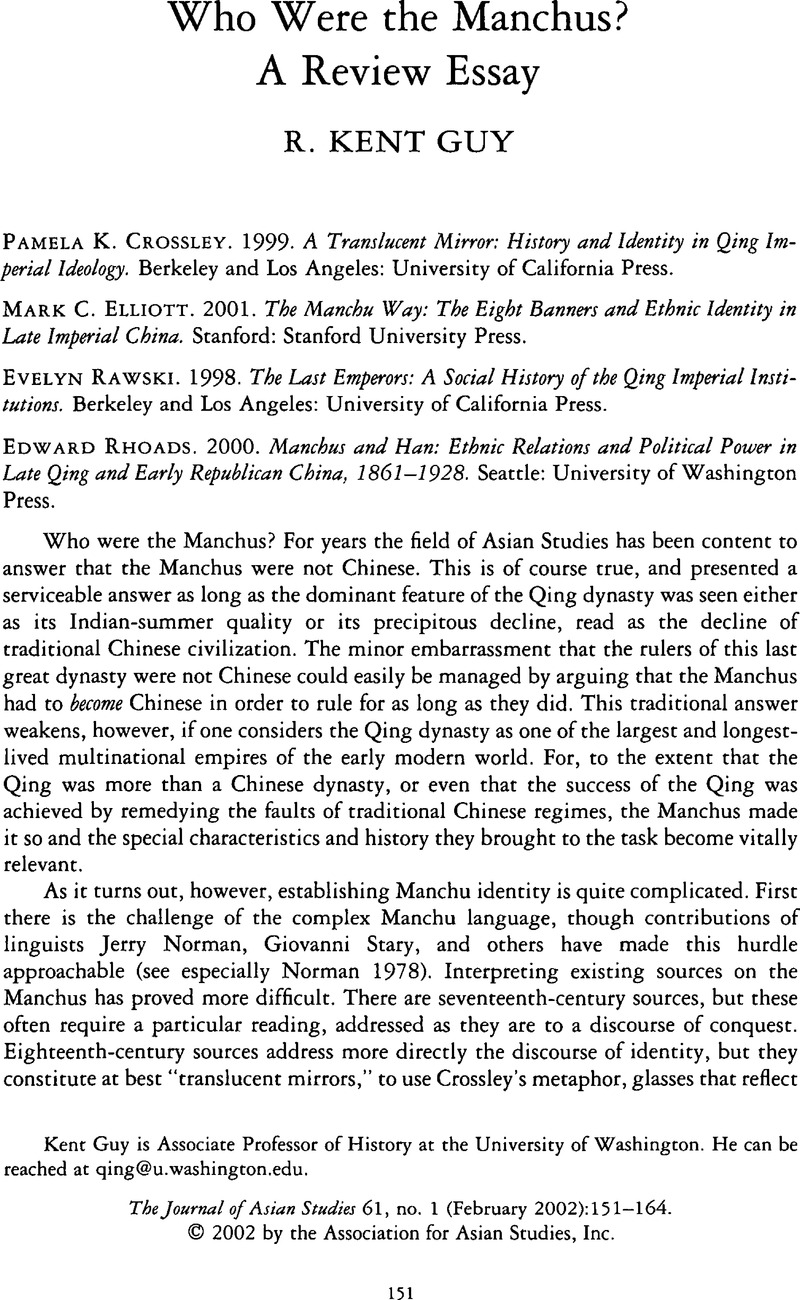Crossref Citations
This article has been cited by the following publications. This list is generated based on data provided by Crossref.
Blum, Susan D.
2002.
Margins and Centers: A Decade of Publishing on China's Ethnic Minorities.
The Journal of Asian Studies,
Vol. 61,
Issue. 4,
p.
1287.
Eskildsen, Robert
2005.
Taiwan: A Periphery in Search of a Narrative.
The Journal of Asian Studies,
Vol. 64,
Issue. 2,
p.
281.
Poston, Dudley L.
Chang, Chiung-Fang
and
Dan, Hong
2006.
Fertility Differences between the Majority and Minority Nationality Groups in China.
Population Research and Policy Review,
Vol. 25,
Issue. 1,
p.
67.
Crossley, Pamela Kyle
2008.
Pluralité impériale et identités subjectives dans la Chine des Qing.
Annales. Histoire, Sciences Sociales,
Vol. 63,
Issue. 3,
p.
597.
2009.
Strange Parallels.
p.
494.
Poston, Dudley L.
and
Xiong, Qian
2014.
Analysing China's Population.
Vol. 3,
Issue. ,
p.
113.
Wu, Guo
2016.
New Qing History: Dispute, Dialog, and Influence.
The Chinese Historical Review,
Vol. 23,
Issue. 1,
p.
47.
Jiang, Yonglin
2018.
THINKING ABOUT “MINGCHINA” ANEW: THE ETHNOCULTURAL SPACE IN A DIVERSE EMPIRE —WITH SPECIAL REFERENCE TO THE “MIAO TERRITORY”.
Journal of Chinese History,
Vol. 2,
Issue. 1,
p.
27.
Herman, John E.
2018.
DE-CENTERING CHINESE HISTORY.
Journal of Chinese History,
Vol. 2,
Issue. 1,
p.
191.
Akçetin, Elif
2018.
A World Trimmed with Fur: Wild Things, Pristine Places, and the Natural Fringes of Qing Rule. By Jonathan Schlesinger . Stanford: Stanford University Press, 2017. ix + 271 pp..
Journal of Chinese History,
Vol. 2,
Issue. 1,
p.
269.
Déry, Carl
2020.
The reception of the “New Qing History” in China: confrontation between global and nationalist historical narratives.
Social Transformations in Chinese Societies,
Vol. 16,
Issue. 2,
p.
167.
Shiming, Zhang
2021.
Law, Resources and Time-Space Constructing.
p.
43.
Phillips, Andrew
2021.
How the East Was Won.
Li, Andy Hanlun
2022.
From alien land to inalienable parts of China: how Qing imperial possessions became the Chinese Frontiers.
European Journal of International Relations,
Vol. 28,
Issue. 2,
p.
237.



